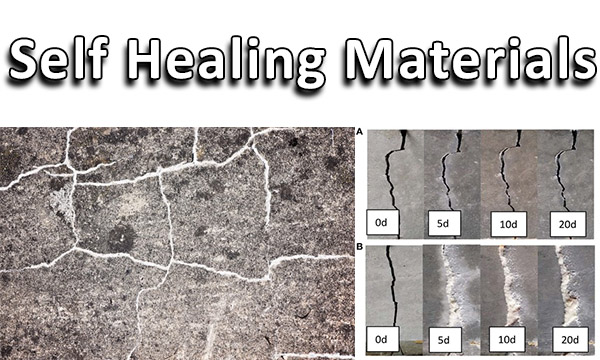The Future Of Self-Healing Materials In Civil Engineering For Infrastructure Maintenance
 You may have heard the term "self-healing materials" before, but do you know what they are and how they work? These revolutionary materials have the ability to repair themselves when damaged without human intervention. They are a game-changing development in the world of building materials and have the potential to revolutionize the construction industry.
You may have heard the term "self-healing materials" before, but do you know what they are and how they work? These revolutionary materials have the ability to repair themselves when damaged without human intervention. They are a game-changing development in the world of building materials and have the potential to revolutionize the construction industry.
Introduction
Self-healing materials have been around for several years, but they have only recently become a hot topic in the construction industry. The self-healing concept is based on materials that can repair themselves without the need for human intervention. The implications of this technology for the construction industry are enormous.
Imagine a world where cracks in concrete and asphalt automatically repair, where metal structures heal themselves after damage, and where the need for frequent maintenance and repair is drastically reduced. The possibilities are endless, and this technology is becoming a reality.
How Do Self-Healing Materials Work?
Self-healing materials work in a number of different ways, depending on the material composition. However, the basic principle is the same across the board. The materials contain a healing agent that responds to damage by flowing into the cracks or damage site. Once inside, the agent reacts with another chemical in the material, causing it to harden and seal the damage.
In some cases, the healing agent is contained within small capsules, which rupture when the material is damaged, releasing the agent into the crack. In other cases, the material contains microfibers that automatically bridge the gap created by the crack.
The technology behind self-healing materials is constantly evolving, and scientists are working to create even more advanced materials that can repair themselves faster and more efficiently.
The Benefits of Self-Healing Materials
The benefits of self-healing materials are clear. For one, they can reduce the need for maintenance and repair, lowering costs and saving time. Self-healing materials can also improve the lifespan of structures, making them more durable and long-lasting.
Another benefit is the potential to reduce waste and environmental impact. With self-healing materials, there is less need for replacements and repairs, which means less waste and fewer resources consumed.
Self-healing materials can also improve safety. For example, self-healing asphalt can repair itself after cracks form, reducing the risk of accidents due to potholes or other damaged road surfaces.
FAQ
What are self-healing materials?
Self-healing materials are materials that can repair themselves when damaged without human intervention. They contain a healing agent that responds to damage by flowing into the cracks or damage site and causing the material to harden and seal the damage.
How do self-healing materials work?
Self-healing materials work by containing a healing agent that responds to damage by flowing into the cracks or damage site and causing the material to harden and seal the damage. The type of healing agent and delivery method can vary depending on the material composition.
What are the benefits of self-healing materials?
The benefits of self-healing materials include reduced maintenance and repair costs, improved lifespan of structures, reduced waste and environmental impact, and improved safety.
What materials can be self-healing?
Self-healing technology has been applied to a variety of materials, including concrete, asphalt, metal, and polymers.
Is self-healing technology expensive?
The cost of self-healing technology varies depending on the specific material and implementation method. However, over time, the technology has the potential to reduce costs associated with maintenance and repair.
When will self-healing materials be widely used in construction?
Self-healing materials are already being used in some construction projects, but widespread adoption is still in the future. As the technology advances and becomes more affordable, we can expect to see more applications in the coming years.
Conclusion
Self-healing materials are a revolutionary development in the world of building materials and have the potential to drastically improve the durability, safety, and sustainability of structures. Although the technology is still in its early stages, scientists are making rapid progress, and we can expect to see more and more applications in the coming years. The potential benefits of self-healing materials are enormous, and it is an exciting time to be involved in the construction industry.


Post a Comment for "The Future Of Self-Healing Materials In Civil Engineering For Infrastructure Maintenance"